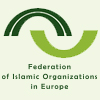You are here
Add new comment
While Islamic Centres in other cities are only working on their themed evenings for the World Hijab Day, ICCs of Zaporizhzhya and Dnipropetrovsk already held theirs. Women’s Departments of those centres introduced not only Islamic prescriptions, but traditional ethnic clothing and headwear as well.
In Zaporizhzhya, for instance, traditional clothing of three peoples was covered: Ukrainians, Crimean Tatars and Volga Tatars. Invited expert Ms.Larysa Kupchenko, an art director of “Oxamyt” (Ukr. “velvet”) dancing group, spoke about main criterias for women’s clothes of the old times in different regions of Ukraine, on types of Ukrainian women’s headdress which were a wide variety depending on the geographical position, age, marital and social status. By the way, the headwear could be not only seen in pictures, but also touched and tried on, for the lecturer also taught the guests several types of styling a kerchief and a headscarf in Ukrainian traditional way.
Ms.Niyara Mamutova spoke about the conditions of hijab, which, despite popular belief, is not only headdress, but a set of general requirements for a believing women’s dress. She also spoke about traditional clothes of Crimean Tatars that were both ethnic and Islamic, and the details differing women of the South Coast and inhabiting the steppes. And, of course, gave a detailed explanations on traditional fes hats, headscarves, and their decorations. Ms.Tanzilya Isa, in her turn, spoke about the ethnic dress of Volga Tatars who have been living in Donbass for several ages by now.
Each of three dozen of guests could try on a look they liked the most during a Master-class on hijab styling, and, of course, discuss the new information and experience over a cup of tea of coffee with sweets.
About twenty women came to the newly-opened Islamic Cultural Centre of Dnipropetrovsk, more than half of them non-Muslims. For that reason, the first lecture was on the meaning of hijab, both inner and outer, and why the outer hijab fails to serve its purpose without inner high morals and modesty. Islam isn’t the only religion prescribing modest clothes, but other Abrahamic religions and most of the traditional cultures teach quite the same.
It was modesty and easy fit that made key characteristics of Ukrainian women’s both everyday and festive dress. Besides, one could read a lot of important information about the woman even having seen her for the first time ever and without actually talking to her: if the girl was of age (since then, dressdown is always worn atop the chemise), if she’s engaged, if her parents were alive, if she had male relatives, what her family’s social status and wealth were; if the woman was married or widowed. Styled Ukrainian dress on the mannequin served as a teaching aid during the presentation.
Having discussed the familiar clothes, the organisators went on to more exotic wear and told the guests about the differences between the women’s dressings in Arab countries. The narrators took several regions to represent: Arabian peninsula (Saudi Arabia, Yemen), the Sham (Syria and Palestine), Egypt and and Maghreb (Tunisia, Algeria and Morocco).
It is widely believed that women’s dress over all these places is absolutely identical: black abaya, black headscarf, covered face. This, however, is very wide off the mark, for the cut, the colour, the decorations, the layers and separate details, the headdress and it’s styling and so on are very different in each country. Moreover, settled population and nomad tribes of the very same country can be easily distinguished by their dress, jewelry, and headwear styling.
And, of course, the guests could have their small talks over the tea and sweets, and try on a look the liked most during the Master-classes. Much to the organisators’ surprise, the niqab wa one of the most popular items, for everyone wanted to be a “mysterious oriental beauty with her face covered up”.
* - there’s a set phrase “to reveal one’s hair”, which means “make a fool of oneself, shame oneself”. Initially, the situation when a woman shower her hair to non-relatives was a great shame for her in earlier times, and the phrase remained long after most Slavic women stopped following that tradition.


























